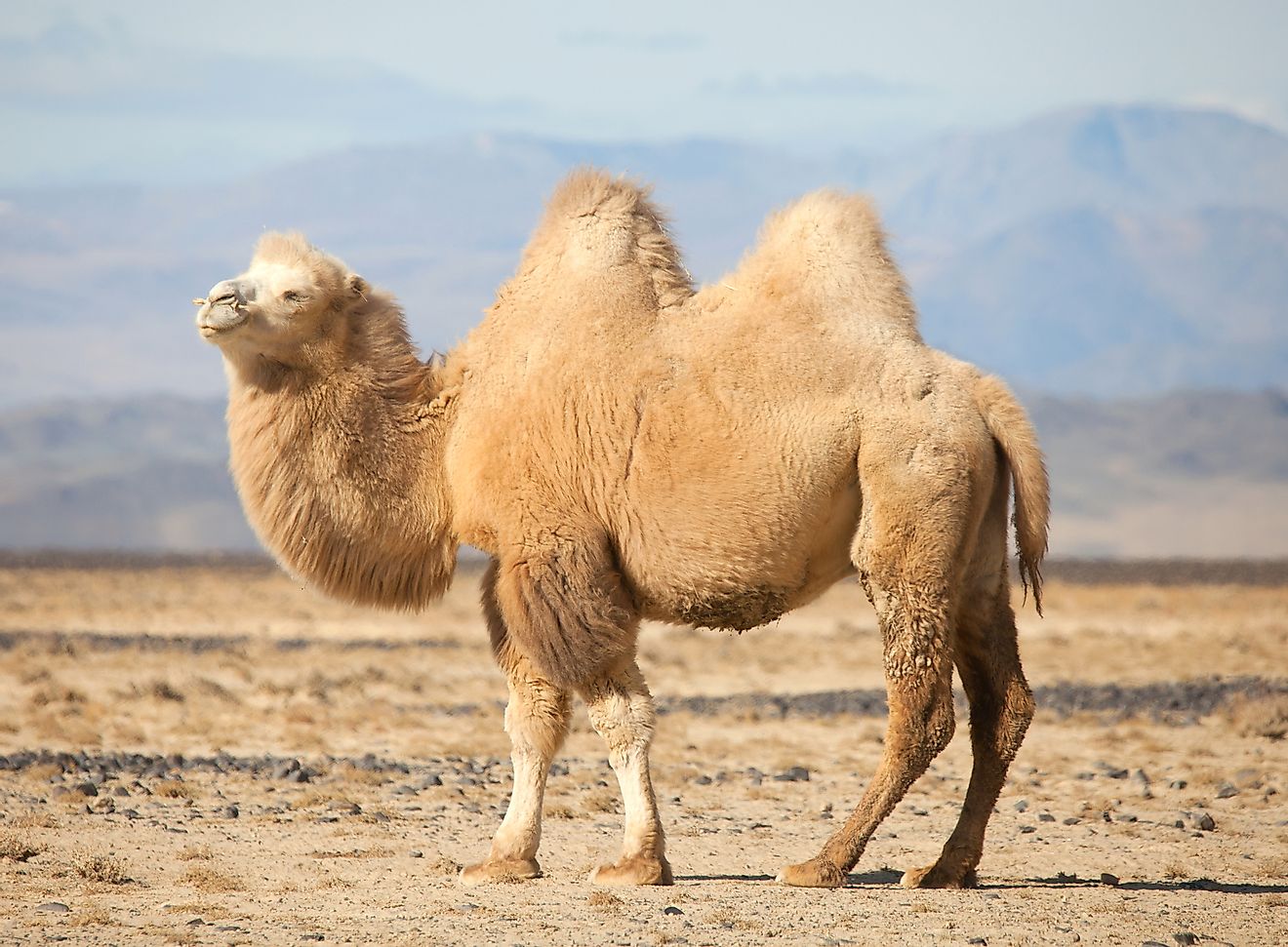Mongolia's Most Threatened Mammals

Mongolia is a country located in East Asia, bordered by China to the south and Russia to the north. Mongolia is well known for the mighty Mongol Empire (1206-1368), the second largest empire in human history that was founded by the notorious Genghis Khan (1162-1227). As a country Mongolia's landscape is defined by the vast, rugged landscape of the Mongolian-Manchurian steppes region and the nomadic population that lives in this area. The country of Mongolia is home to a variety of threatened and endangered mammals, some of which are endemic species.
Threatened Mammals of Mongolia:
Bactrian Camel
The Bactrian camel is a large, even-toed ungulate (hoofed animal) that is a member of the Camelidae family. This species of camel is the largest living camel species on Earth. Its body and head varies from between 7.38 to 11.48 feet in length and its tail can grow to be between 14-22 inches. The species also has giant shoulders that range in height from 5.9 to 7.5 feet. The Bactrian camel can range in weight between 660 to 2,200 pounds.They have two large humps made up of fat, as well as long eyelashes, seal-able nostrils and broad toes, which helps with their ability to deal with sand and sandstorms. This species is found in the rocky massifs, stony desert plains, fringed oases and the high sand dunes of deserts. The species is found in the Taklamakan Desert in China, the Gobi Desert in China and Mongolia and the Trans Altai Govi Desert in Mongolia. According to the International Union for Conservation of Nature (IUCN) Red List, the Bactrian Camel has been listed as a critically endangered species since 2002 and its population has been decreasing. The major threats the that species faces is having a fragmented habitat, having lost the western part of its original habitat range in Kazakhstan. The species is also being increasingly hunted by wolves due to a lack of water sources in the desert due to drought.
Przewalski's Horse
Przewalski's Horse, scientific name Equus ferus przewalskii, is a subspecies of wild horse that is part of the Equidae family of horses. This species is unique from all other horse species in that it has 66 chromosomes, instead of the usual 64. Due to loss of habitat the species is now mostly found in semi-desert habitats with limited water. This species was found the Russian steppes and eastwards into Kazakhstan, Mongolia and China but became extinct in the wild by 1969. Since then the species has been bred in captivity, and during the 1990s efforts were started to reintroduce them to the wild. The species is now found in the Great Gobi B Strictly Protected Area, the Hustai National Park and the Great Lakes Depression in Mongolia. According to the IUCN Red List, Przewalski's Horse has been listed as a endangered species since 2011, although its population has been increasing. The major threats that this species currently faces is from its small population, limited distribution, the risk of hybridization with domestic horses, and infectious disease.
Saiga Antelope
The Saiga is a species of antelope that is part of the Bovidae family of cloven-hoofed ruminant mammals. An adult of the species has a length that is between 39 to 55 inches and stands at a height of between 24 to 32 inches. This species has dark marks on its nose and cheeks, with a coat that can be yellow to red in color in the summer before turning a pale gray or brown color during the winter. The males of the species have horns. This species was once common in the area around the Eurasian steppes and its semi-deserts but is now regionally extinct in Moldova, Poland, Ukraine and China. The species is now only found in the Republic of Kalmykia in Russia, Kazakhstan and in western Mongolia, where the subspecies of Saiga Antelope is found. According to the IUCN Red List, the Saiga Antelope has been listed as a critically endangered species since 2002 and its population has been decreasing. The major threats that this species faces are from illegal hunting for their horns and meat, the loss of key habitats and migration routes, severe winters, steppe fires and a heavily skewed sex ratio within the species.
Conservation efforts surrounding the endangered mammals of Mongolia
There are many different actions that are being taken to try and help the threatened mammals of Mongolia. The government of Mongolia, as well as other the governments of other countries in the region where these animals are found, are setting up national parks and nature reserves to give these animals protected areas in which to live. There are also breeding programs in place to help encourage population growth.
Mongolia's Most Threatened Mammals
| Mongolia's Most Threatened Mammals | Scientific Name |
|---|---|
| Bactrian Camel | Camelus bactrianus |
| Saiga Antelope | Saiga tatarica |
| Long-Eared Jerboa | Euchoreutes naso |
| Siberian Tiger | Panthera tigris altaica |
| Snow Leopard | Uncia uncia |
| Ussuri Dhole | Cuon alpinus alpinus |
| Tien Shan Dhole | Cuon alpinus hesperius |
| Przewalski's Horse | Equus ferus przewalskii |







